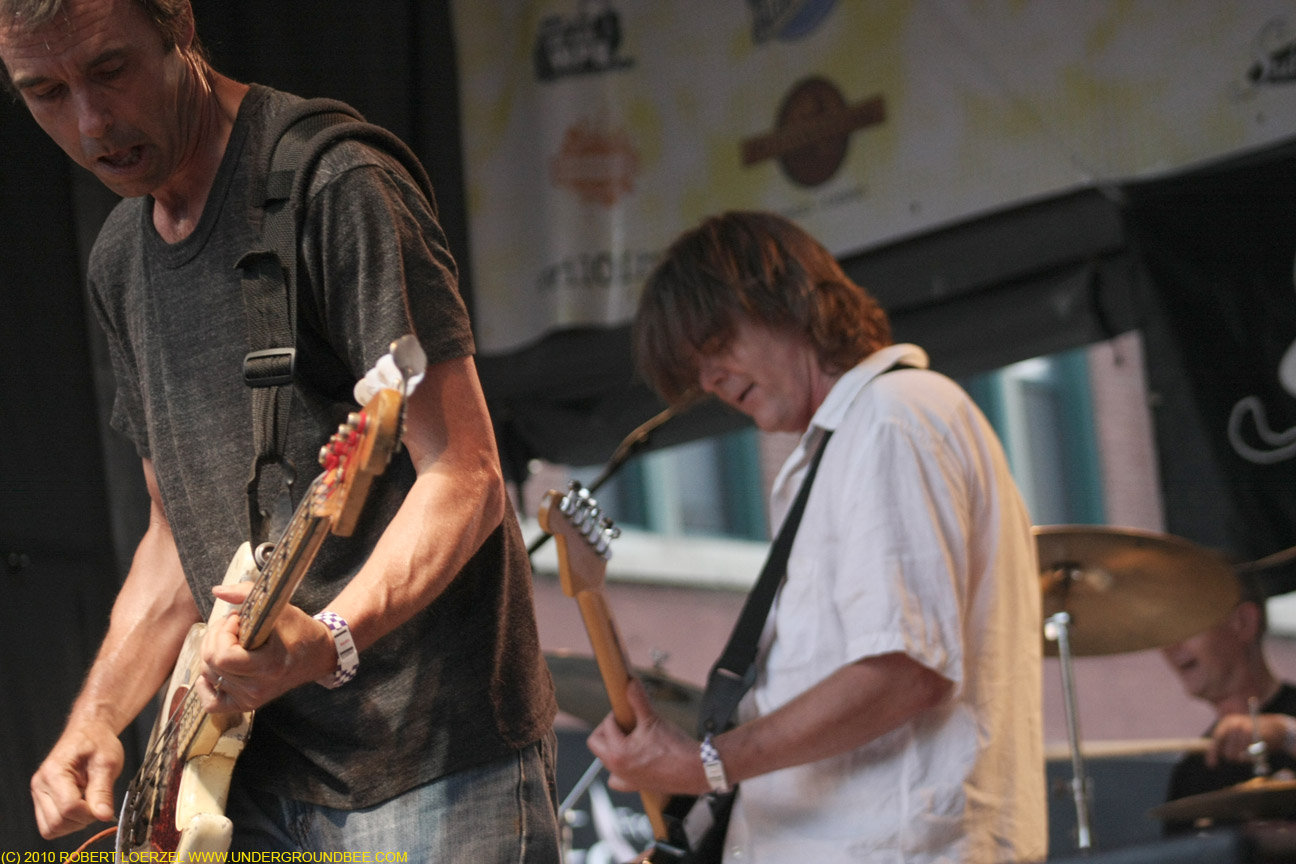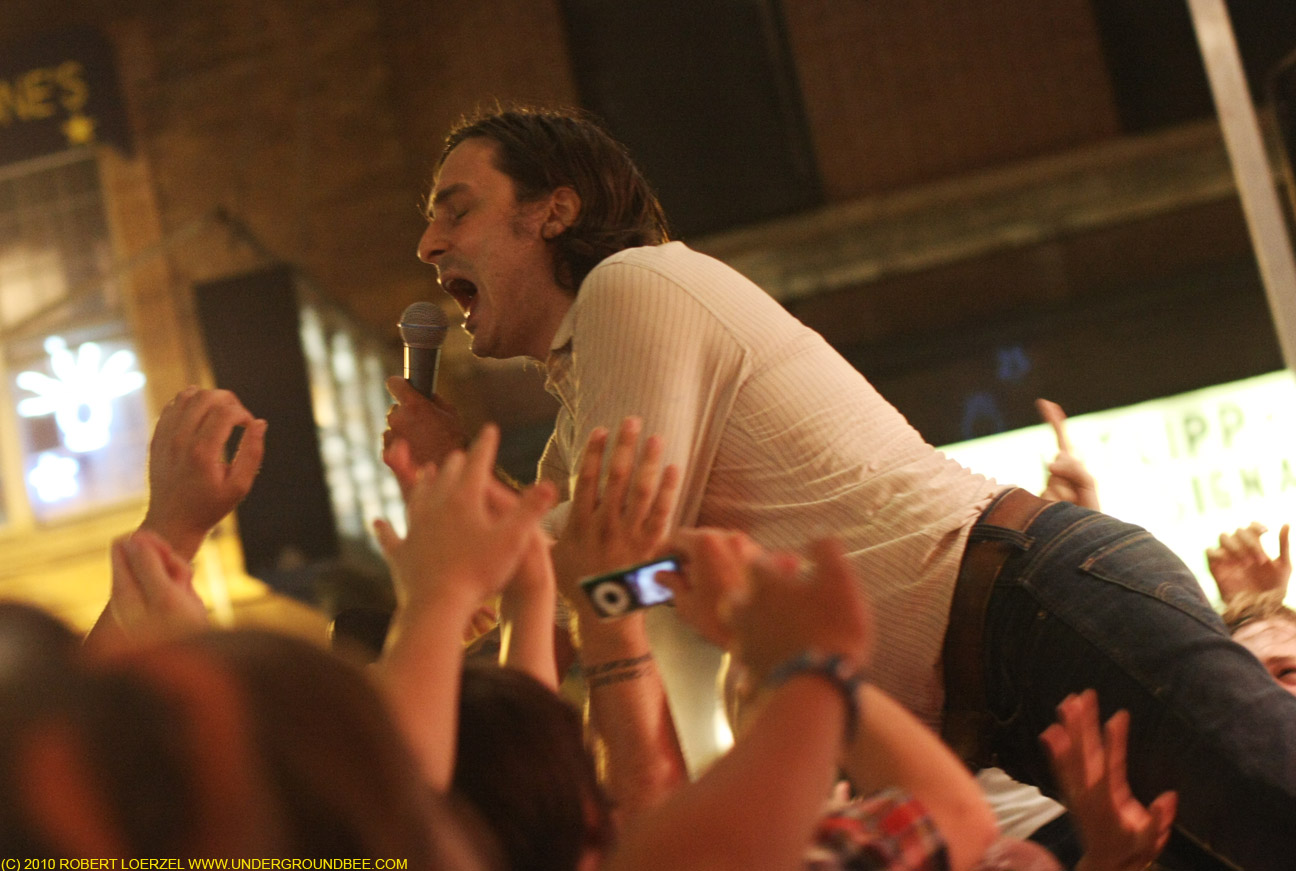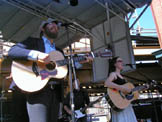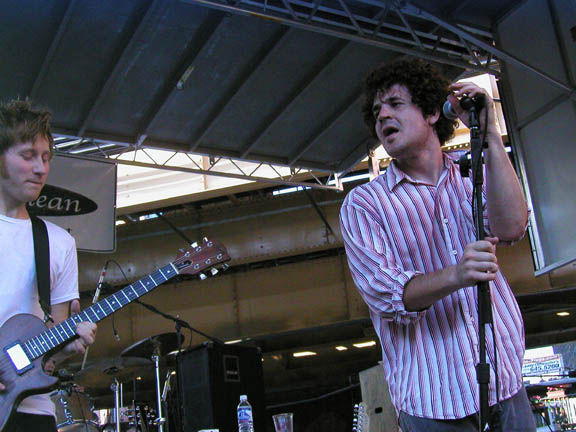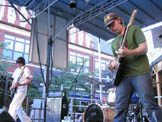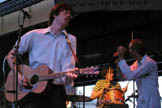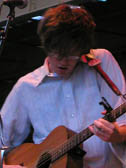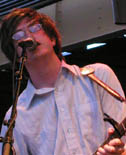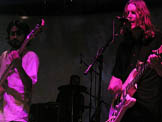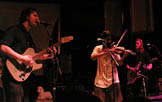This past weekend’s Wicker Park Festival had a pretty strong lineup on both days. I was there for the two final sets on the north stage Saturday night: Mission of Burma followed by Cap’n Jazz.
The two bands have something in common. Both labored in obscurity when they were originally together. And both are more famous now that they’ve reunited. Well, “famous” is a relative term here, but at least they’re getting more recognition now, long after original hey day.
In Michael Azerrad’s terrific book about underground rock bands of the 1980s, Our Band Could Be Your Life, he describes Mission of Burma touring the country and playing in front of barely anyone. Reunited now since 2002, Mission of Burma at least draws a decent-sized crowd.
The aging punks sounded fierce and alive as they played Saturday on Milwaukee Avenue. The kids in the crowd started moshing, slamming up against one another, as Mission of Burma ran through some of its best-known old tunes in the final part of the set: “That’s When I Reach for My Revolver,” “This Is Not a Photograph” and “Red.”
[nggallery id=5]
Cap’n Jazz apparently had a pretty good local following back in the early 1990s, but I for one heard nothing about them until years later. Here I was, a journalist at a suburban newspaper trying to stay on top of such things, and somehow it escaped my attention that some young guys from Wheeling were making all this noise. This was not the sort of band that sent out press releases to the local paper. Some now point to Cap’n Jazz as one of the groups that influenced all those later “emo” bands. I finally heard about Cap’n Jazz when its lead singer, Tim Kinsella, went on to perform in a series of other, and usually artsier, stranger bands, including Joan of Arc. (For more background, read Jessica Hopper’s interview with Tim Kinsella for the Chicago Reader.)
Reunited, apparently for just a brief tour, Cap’n Jazz is drawing sell-out crowds at clubs. They even landed on the front page of The New York Times’ Arts section.
Saturday night, the fans were rabid with excitement as Kinsella and company thrashed through their songs. “Just to be clear, these songs were written 15 or 17 years ago,” Kinsella remarked at one point. When a fan apparently said something encouraging Kinsella not to go away again, he said, “It’s not like I’ve been hiding, man … If you’d gone to a Joan of Arc show, there’d have been 30 people there.”
Kinsella threw himself out on the crowd a number of times. As the show reached its climax, maybe or dozen or so audience members climbed up onto the stage and dived back into the crowd. With a minute left before the end, security guards finally showed up to see what was going on.
[nggallery id=6]
